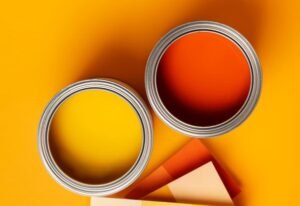Introduction to Emulsion Paint
Emulsion paint is a water-based paint widely utilized for various painting applications, particularly in residential and commercial settings. Its primary components include pigments, additives, and a binding agent, typically made from acrylic or vinyl. This unique formulation allows for rapid drying times and easy clean-up, distinguishing it from traditional oil-based paints. The ability to mix with water makes emulsion paint a favored option for consumers seeking a more environmentally friendly alternative.
There are two main types of emulsion paint: matte and gloss. Matte emulsion offers a non-reflective finish, making it ideal for wall coverings in living spaces, while gloss emulsion provides a shiny finish suitable for areas requiring durability and easy cleaning, such as kitchens and bathrooms. Furthermore, some manufacturers produce specialty emulsion paints designed for specific surfaces, including ceilings, woodwork, and metal. This versatility makes emulsion paint an effective choice for various projects.
The advantages of emulsion paint over other types of paint are numerous. One of the most significant benefits is its low volatile organic compound (VOC) content, rendering it safer for indoor air quality. Moreover, emulsion paint typically adheres well to surfaces without the necessity of additional primers, eliminating extra steps in the painting process. Additionally, it provides excellent coverage with fewer coats required compared to oil-based alternatives. The paint also benefits from a quick drying time, allowing for faster completion of projects.
This combination of ease of use, safety, and variety makes emulsion paint a preferred choice for consumers and professional painters alike. Its popularity has surged, shaping the market to meet the evolving demands of quality, innovation, and sustainability found in modern mithila paints. As manufacturers continue to innovate, emulsion paint stands out as a versatile and reliable option for various applications.
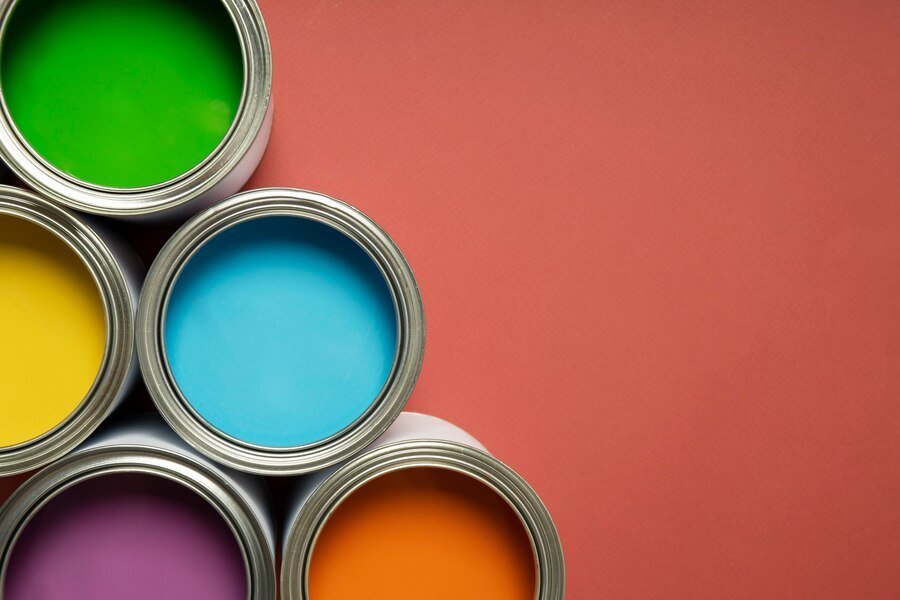
The Importance of Choosing the Right Manufacturer
Selecting a reliable emulsion paint manufacturer is a critical decision that can significantly influence the overall quality and longevity of your painting projects. The credibility of a manufacturer plays a pivotal role in the final product’s performance; thus, it is essential to conduct thorough research on potential partners. Trustworthy manufacturers, such as those specializing in mithila paints, often boast a strong industry reputation backed by years of experience and proven results.
A reputable emulsion paint manufacturer prioritizes quality assurance processes to ensure that their products meet rigorous standards. This commitment to quality typically involves extensive testing and adherence to safety regulations, which can further safeguard the integrity of your undertaking. High-quality emulsion paints not only exhibit superior coverage but also have better adhesion and longevity, making them a worthwhile investment. When considering mithila paints, for example, ensuring that the manufacturer implements strict quality control measures can lead to enhanced durability and aesthetic appeal.
Furthermore, the technological innovations adopted by paint manufacturers can have a considerable impact on the formulation and environmental sustainability of their products. Companies that invest in research and development often produce advanced formulas that are not only more effective but also offer eco-friendly solutions, appealing to environmentally conscious consumers. As the demand for sustainable products rises, choosing a forward-thinking emulsion paint manufacturer can help you stay ahead of market trends while contributing positively to the environment.
In summary, the importance of selecting the right emulsion paint manufacturer cannot be understated. A manufacturer with a solid reputation, rigorous quality assurance processes, and a focus on innovation ensures that the final outcome of your project meets both aesthetic and performance standards. By prioritizing these factors, you contribute to the successful completion of your project and promote the use of high-quality mithila paints and other reliable products in the market.
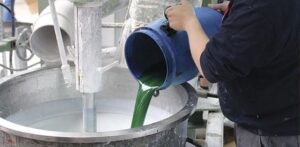
Key Characteristics of Quality Emulsion Paints
When selecting emulsion paints, there are several essential qualities that consumers should consider to ensure they are making a sound investment. High-quality emulsion paints boast attributes that enhance their performance and durability, proving invaluable for any painting project.
First and foremost, coverage is a critical characteristic. Quality mithila paints typically have superior pigmentation, which allows them to cover base surfaces more effectively. A good emulsion paint should be able to achieve satisfactory results with fewer coats, translating to both time and cost savings. Consumers should look for products that specify their coverage area per liter, as this can provide a useful benchmark for evaluating paint options.
Another vital factor is drying time. Professional-grade emulsion paints generally dry quickly, allowing homeowners and contractors to complete projects efficiently. Depending on the specific application environment, choosing paints that retain flexibility and avoid cracking or peeling during the drying process is essential. Pay attention to the drying times stated by manufacturers, as this can affect project timings significantly.
Finish options are also paramount when selecting quality emulsion paints. Consumers should have a range of finishes, including matte, satin, or gloss, to match their aesthetic preferences and functional needs. Different finishes have unique applications, such as high gloss options being more suitable for high-traffic areas due to their durability and ease of cleaning.
Lastly, resistance to wear and weather significantly defines the quality of emulsion paints. A robust product can withstand environmental factors such as moisture, mold, and UV exposure, making it ideal for both indoor and outdoor applications. Therefore, selecting paints that are specifically designed for various conditions is essential for ensuring lasting results.
By evaluating these key characteristics, consumers can make informed decisions and choose emulsion paints that will meet their needs effectively.
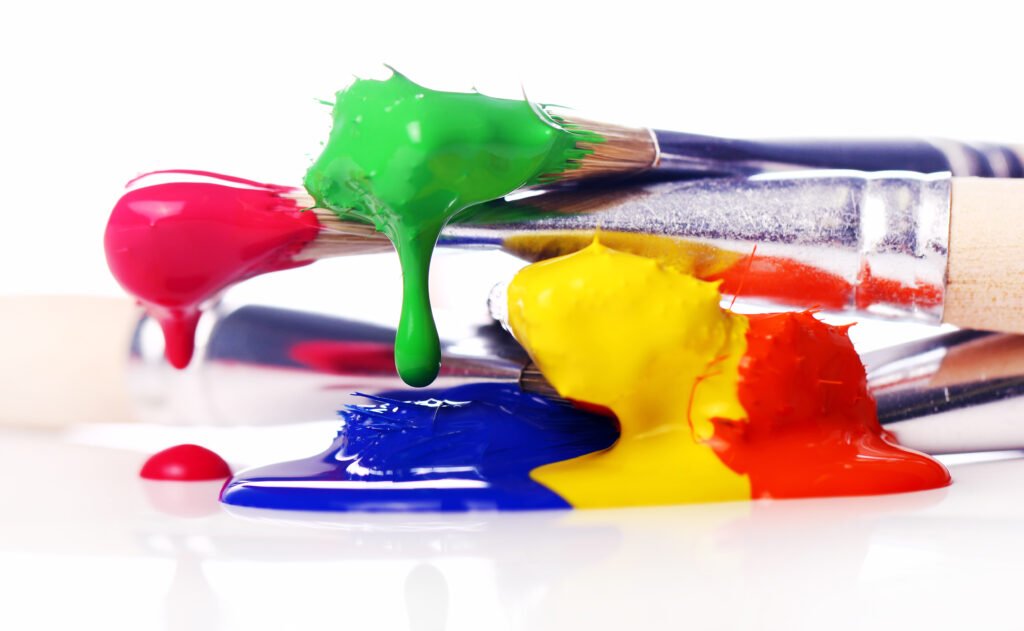
Leading Emulsion Paint Manufacturers in the Industry
The emulsion paint industry is characterized by a number of prominent manufacturers who have established themselves as leaders through innovation, quality, and sustainability. Among these brands, Asian Paints stands out as a significant player, originating in India in 1942. Initially a small decorative paints manufacturer, Mithila Paints has evolved into a global enterprise, offering an extensive range of products, including high-quality mithila paints. Renowned for its innovative solutions and sustainability initiatives, the company has garnered numerous awards, including the ‘Best Overall Paint Brand’ by the Economic Times.
Another reputable manufacturer is Sherwin-Williams, based in the United States since 1866. This company offers an expansive array of paints and coatings known for durability and performance. Its environmental commitment has led to multiple certifications, including LEED accreditation for several products. Sherwin-Williams has also made strides with its sustainable practices in emulsion paints, focusing on low-VOC options that contribute to healthier indoor air quality.
PPG Industries is another notable manufacturer, founded in 1883, which is known for its wide variety of paint solutions. With a global presence, PPG’s innovative offerings in mithila paints cater to both interior and exterior applications. The company has been recognized with numerous awards for its product quality and commitment to sustainability, implementing eco-friendly practices throughout its manufacturing processes.
Finally, Dulux, a brand under the AkzoNobel umbrella, has become synonymous with quality due to its long-standing reputation since its formation in the early 1900s. Dulux offers a comprehensive selection of emulsion paints, focusing on vibrant colors and environmental responsibility. The company’s continued efforts in product innovation have not only secured a loyal customer base but also established Dulux as a leader in sustainable paint solutions. Collectively, these manufacturers illustrate the evolving landscape of emulsion paints, where quality, innovation, and sustainability play pivotal roles in shaping the industry.

Innovations in Emulsion Paint Manufacturing
Emulsion paint manufacturing has experienced significant advancements in recent years, driven by the increasing emphasis on sustainability and environmental responsibility. These innovations not only enhance the performance of paints but also offer safer and more eco-friendly options for consumers and manufacturers alike. Companies are continuously exploring new formulations that utilize renewable resources while maintaining quality and aesthetics.
One of the most notable innovations is the development of low-VOC (volatile organic compounds) and zero-VOC emulsion paints. These formulations reduce harmful emissions during application, contributing to healthier indoor air quality. This shift is in response to growing consumer awareness regarding the impacts of traditional paint products on both health and the environment. For instance, mithila paints, known for their vibrant colors and finishes, are increasingly incorporating low-VOC ingredients, broadening their appeal in the market.
Furthermore, advancements in pigment technology have expanded the color palette available to consumers. Manufacturers are now able to offer a wider range of hues that are not only visually appealing but also durable. The introduction of innovative textures and finishes has transformed how consumers perceive and utilize emulsion paints. From matte to high-gloss, the variety available allows for greater personalization in design and application, permitting consumers to create unique aesthetics in their spaces.
Another significant area of innovation involves the incorporation of biobased materials. Many emulsion paint manufacturers are experimenting with natural resins and other materials derived from plants, reducing dependency on petrochemicals. This approach not only promotes sustainability but also improves the biodegradability of paint products. As a result, the lifecycle impact of these products diminishes, establishing a more environmentally friendly choice for consumers.
In conclusion, the emulsion paint manufacturing industry is evolving through significant innovations aimed at sustainability, aesthetic enhancement, and user safety. With ongoing research and development initiatives, the future of mithila paints and other emulsion products looks promising, aligning consumer needs with environmental stewardship.
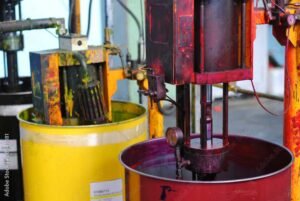
Sustainability in Emulsion Paint Production
The trend toward sustainability has significantly influenced the emulsion paint manufacturing industry, urging producers to adopt eco-friendly practices throughout their processes. Leading manufacturers are committed to reducing their environmental footprint by utilizing low-volatility organic compound (VOCs) materials and implementing responsible sourcing techniques. This transition not only benefits the environment but also meets the growing consumer demand for greener alternatives.
Mithila paints, for instance, exemplify how industry players can effectively embrace sustainability by reformulating their products. Many manufacturers have begun to integrate bio-based substances into their formulations, replacing conventional petroleum-derived ingredients with renewable resources. This strategic shift significantly lowers the VOC emissions associated with traditional paint products, thereby delivering a healthier indoor air quality for consumers and reducing harmful environmental impacts.
In addition to reformulating their products, companies are increasingly investing in sustainable manufacturing processes. This involves optimizing energy consumption and water usage in production facilities. By employing renewable energy sources, manufacturers of emulsion paints can minimize their reliance on fossil fuels, thereby decreasing greenhouse gas emissions. Furthermore, many organizations are enhancing their production lines to reduce waste, striving towards a circular economy where materials are reused and recycled effectively.
Responsible sourcing is yet another vital aspect of sustainability in the paint industry. Leading emulsion paint manufacturers are actively seeking out suppliers who adhere to ethical practices, ensuring that raw materials are sourced responsibly. By prioritizing local suppliers, companies not only support local economies but also reduce transportation emissions associated with long-distance shipping.
In conclusion, the integration of sustainability practices in emulsion paint production is essential for reducing environmental impacts and accommodating consumer preferences. As the industry continues to evolve, the commitment to using low-VOC materials and sustainable manufacturing techniques will undoubtedly shape the future of mithila paints and other leading brands.
Tips for Choosing the Best Emulsion Paint for Your Needs
When selecting the appropriate emulsion paint, it is essential to consider several factors to ensure that the final choice meets your specific requirements. Understanding the intended surface to be painted is crucial. Different surfaces, such as walls, ceilings, or furniture, may require particular formulations of mithila paints or other emulsion paints. For instance, paints designed specifically for walls may have different properties compared to those intended for bathroom ceilings, which often require moisture-resistant formulas.
Next, determining the desired finish is vital. Emulsion paints typically come in various finishes, including matte, satin, and glossy. A matte finish can hide imperfections on walls but may not be as washable as a satin or glossy finish, which provides durability and ease of cleaning. Therefore, consider both aesthetics and practicality when deciding on the finish. Additionally, if you are opting for a specific color, ensure that the selected emulsion paint is available in the desired shade, as some brands may offer limited color ranges.
Environmental considerations should also play a significant role in the decision-making process. Many consumers today are increasingly concerned about sustainability and health. Look for mithila paints or other emulsion options that are low in volatile organic compounds (VOCs), as these safety standards contribute to better indoor air quality. Furthermore, many manufacturers offer eco-friendly variants that ensure minimal environmental impact, aligning with modern sustainability efforts.
Lastly, it is advisable to read reviews and seek recommendations from professionals or trusted sources to gauge the quality and performance of different products. This research can help you make an informed decision that fits not just your aesthetic desires but also practical and environmental considerations, ensuring satisfaction with your choice of emulsion paint.

Common Misconceptions About Emulsion Paint
Emulsion paint has garnered popularity as a versatile choice for interior and exterior painting projects. However, several misconceptions regarding its properties and applications remain prevalent among consumers. One of the most common myths is that emulsion paints are not durable. Contrary to this belief, high-quality emulsion paints are formulated to withstand wear and tear, making them suitable for various surfaces. With advancements in technology, many manufacturers now produce durable variants that can resist fading, flaking, and moisture, particularly when used in areas exposed to high humidity.
Another misconception revolves around the ease of application. A segment of homeowners perceives emulsion paint as challenging to apply, fearing that it requires professional expertise. In reality, many emulsion paints are designed for user-friendly application, enabling DIY enthusiasts to achieve professional-looking finishes. They typically have good leveling properties and quick drying times, allowing for seamless layering and alterations. The availability of various types of brushes and rollers further simplifies the task, making it accessible to individuals with limited painting experience.
Furthermore, some individuals mistakenly believe that emulsion paint is unsuitable for high-traffic areas due to concerns about its adhering properties. However, modern formulations of emulsion paints, particularly those categorized as washable or scrubbable, are tailored specifically for such environments. These innovative products offer increased resistance to stains, ensuring that surfaces maintain their pristine appearance despite frequent cleaning. It’s essential to consult with manufacturers and review specifications to ensure the chosen emulsion paint meets project requirements.
By debunking these misconceptions surrounding emulsion paint, consumers can make informed choices that align with their project needs. Understanding the durability, application ease, and suitability for various environments allows for more confident decisions when selecting from the myriad of paint options available in the market.
Conclusion: The Future of Emulsion Paint
The emulsion paint industry is poised for significant evolution as it adapts to changing market demands and environmental considerations. With increasing awareness regarding sustainability, manufacturers are prioritizing the development of eco-friendly formulations. The future of emulsion paint appears to be heavily influenced by innovations that address both consumer preferences and environmental impacts. Manufacturers are exploring various avenues, including the use of bio-based raw materials and the incorporation of recycled components into their products.
As we look towards the future, one notable trend is the rise of products that not only boast aesthetic qualities but also contribute to healthier living environments. For instance, zero-VOC (volatile organic compounds) paints are becoming increasingly available, ensuring improved indoor air quality. Innovations in technology, such as smart coatings that can adapt to different environmental conditions, are also emerging. Such advancements signify a shift towards a more dynamic and responsive approach to paint functionality that can enhance the user experience.
The role of manufacturers in steering sustainability efforts is critical. By adopting green manufacturing processes, reducing waste, and prioritizing energy-efficient practices, they can significantly mitigate the ecological footprint of paint production. Furthermore, partnerships with other industries and stakeholders can help to accelerate the transition toward sustainable methodologies. As the consumer market continues to demand transparency and environmental responsibility, manufacturers will increasingly need to showcase their commitment to sustainability.
In conclusion, the future of emulsion paints is promising, characterized by innovation and a steadfast commitment to sustainability. By evolving in response to consumer needs and environmental challenges, manufacturers can ensure that their emulsion products, including notorious selections like mithila paints, remain relevant and beneficial in a rapidly changing world.

